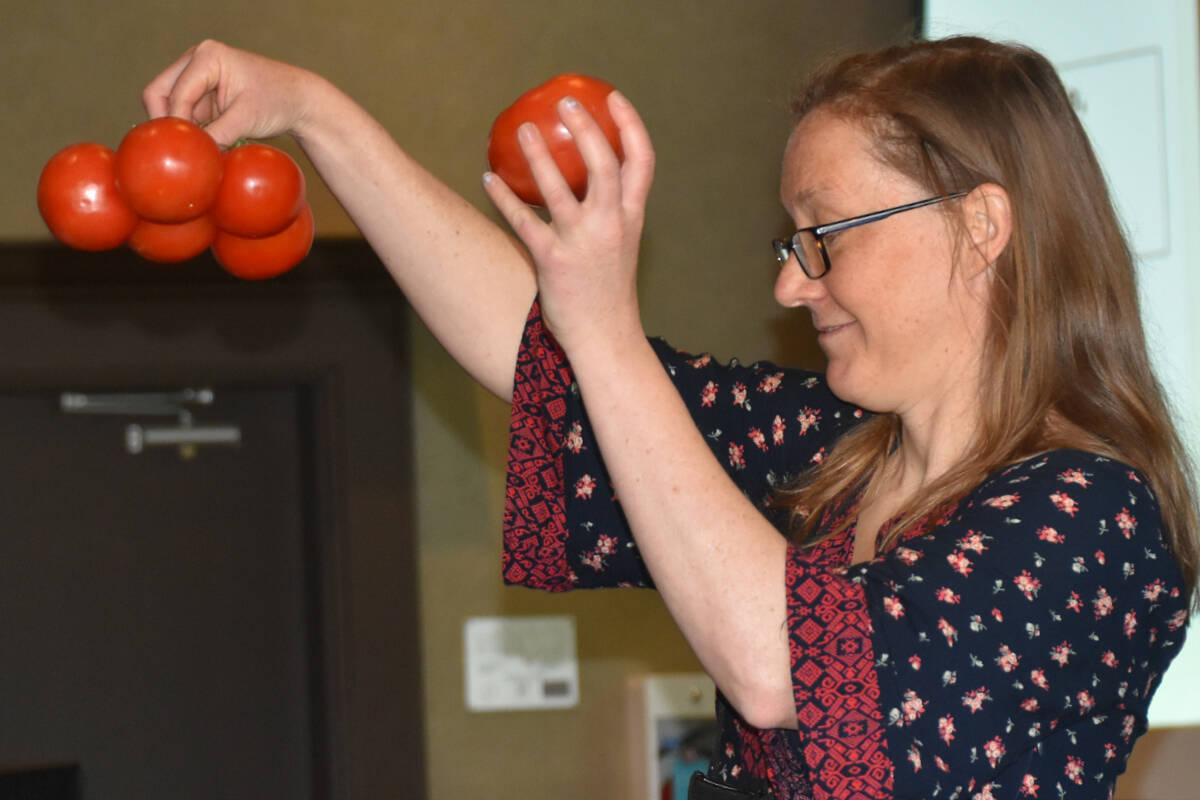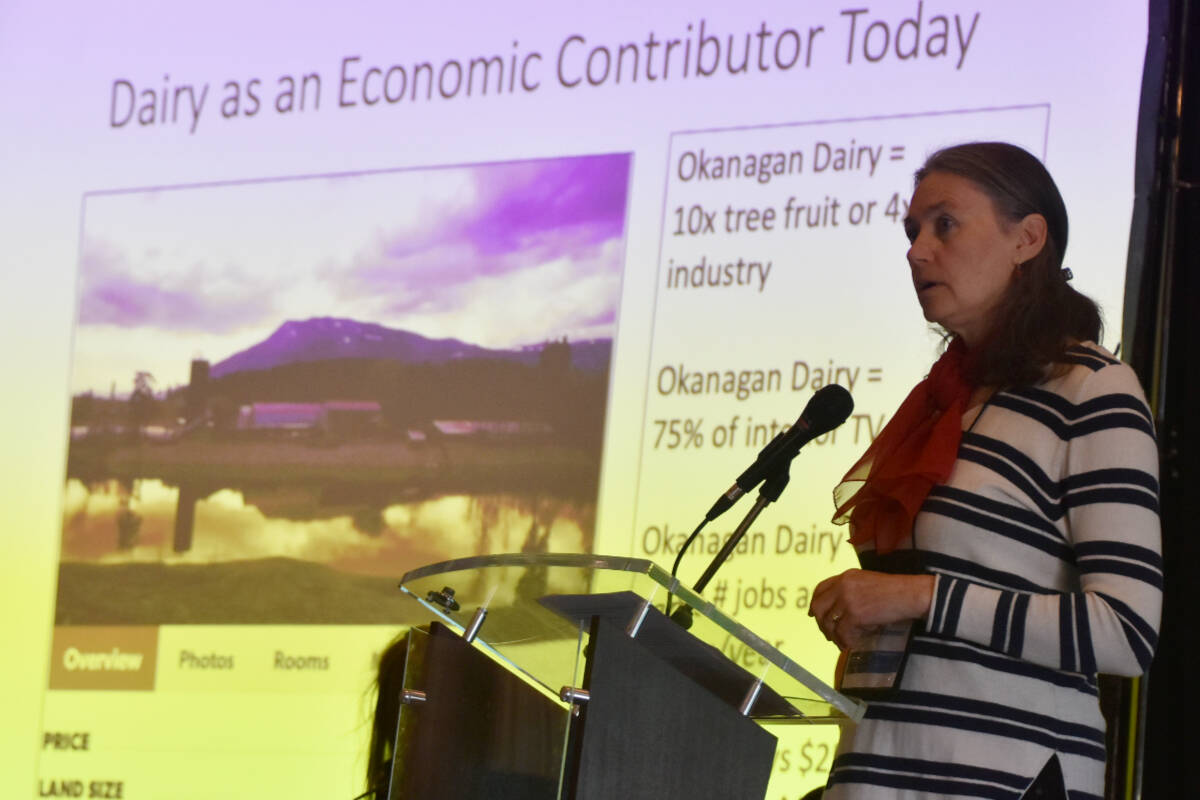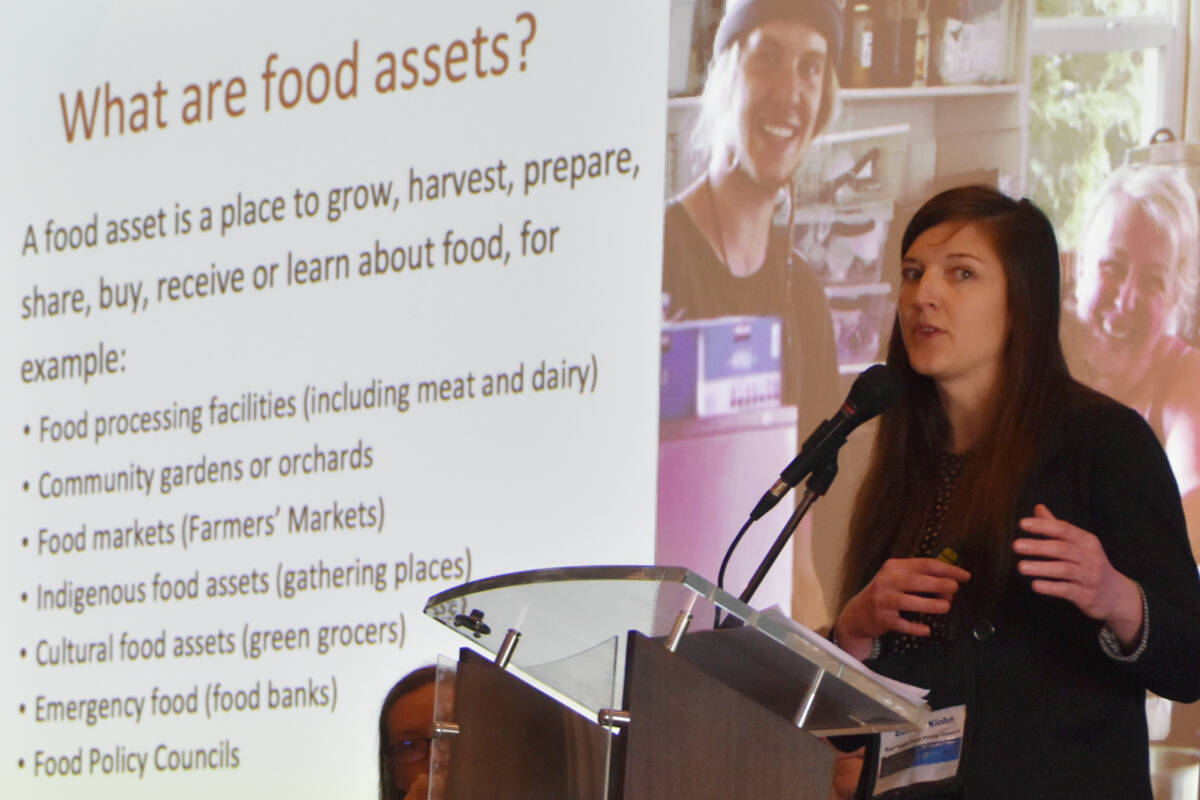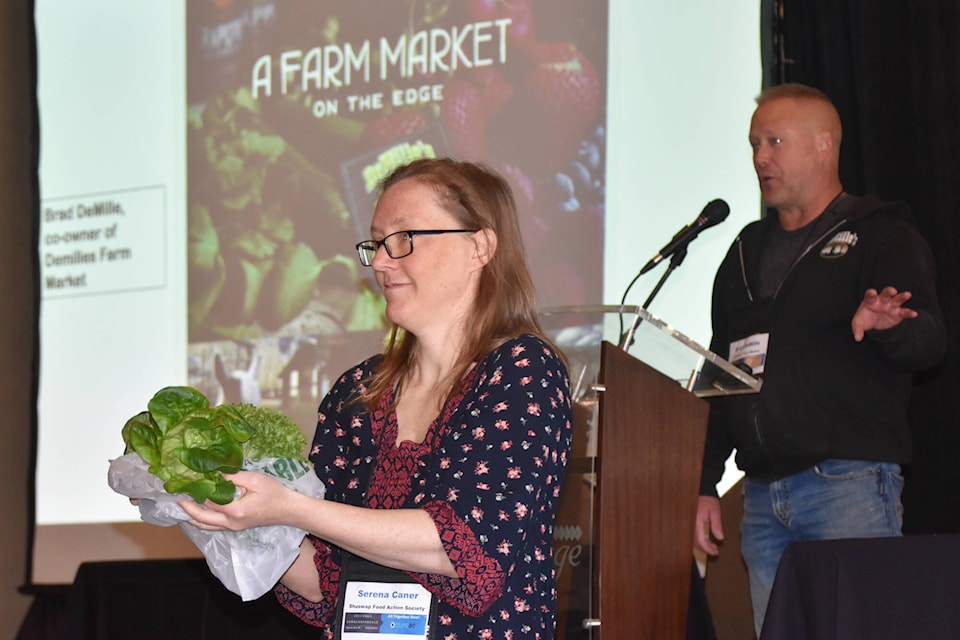A three-pack of garlic from China, 77 cents. Three B.C.-grown heads of garlic, $7.50.
Asparagus from Mexico, recently $1.48 on special. B.C. asparagus, starting off the season at $5.50 a pound.
California leaf lettuce, $2.99 a head. Leaf, romaine or butter lettuce from Armstrong, $4.50.
Brad DeMille, co-owner of DeMille’s Farm Market in Salmon Arm, provided a little vegetable show-and-tell as part of a panel on community food systems at the recent Southern Interior Local Government Association Convention.
The message: If people in the Southern Interior want to keep eating in the face of supply-chain disruptions, heat domes, atmospheric rivers and pandemics, then supporting local food production is a must.
DeMille said his business supports 152 local suppliers and 75 per cent of what he sells is sourced in B.C. What’s one of the biggest challenges of selling local food? People’s purchase price threshold.
“You expect it (asparagus) to be $1.50 and when you see $5.50, you think we’re ripping you off. This is what it takes to get it to market.”
DeMille pointed out that Canada used to be a leader in producing frozen vegetables, great for the winter.
“We’ve reduced ourselves to the cheapest thing we can buy. And then complain that things are going up.”
He asked what will happen if 50 per cent of cheaper foods are removed from shelves.
DeMille said he realizes people have a budget, but if local producers aren’t supported now, people won’t be able to afford them in the future. If Mexico and California cut off B.C. and Canada, “we’re in for a real pickle. And you’re going to start getting hungry. Not starve, but you’re going to get hungry.”

Serena Caner assists with Brad DeMille’s presentation
Serena Caner, executive director of the Shuswap Food Action Society, spoke of the effects of colonialism on Secwépemc people, in terms of food. She noted consequences such as loss of knowledge of traditional foods, and loss of access to hunting and gathering land.
“It’s our responsibility to start using food as a tool of reconciliation and not oppression,” she said.
Caner went on to say that interruptions in food supply can affect vulnerable populations the most as they usually don’t have the means to accumulate food.
“Lack of affordable housing is a cause of food insecurity. Seniors now are choosing between eating and taking medications because most of their income is going to pay rent.”
She said food is a municipal issue and one that needs to be addressed now, not in a 10-year plan. Local government officials must start advocating for funds to be spent on food, on building a more localized food infrastructure, Caner emphasized.

Andrea Gunner, an agricultural economist and a poultry farmer, started by saying that Canada has the lowest food subsidies of any country in the world. She also said B.C.’s southern Interior is the most agriculturally diverse place in Canada.
“That’s why I live here.”
She spoke of dairy being the most successful sector in B.C., thanks to supply management. Production quotas are set, creating inter-generational stability.
Referring to the benefits of value-added processing, she noted how little forestry adds to the economy in terms of value per employee, in comparison to agriculture.
“For 68,000 direct agricultural jobs, the economic value per employee to society is $236,000 per year,” she said. “Forestry, 100,000 workers, it’s $133,000 per worker… And we all think, forestry is such a big industry, right? We need to get more value out of our wood.”
She said local government officials can learn how to support their agricultural industries.
“We need to pay attention to food. We have lost a lot of food security.”

Bonnie Klohn with Kamloops Food Policy Council offered a number of ways for local governments to support food production.
They included starting with food goals and policies, having ongoing core funding for food organizations, and having an audit of planning practices to incorporate food.
She spoke of creating policies that require community amenity contributions from developments, and allowing density or waiving of fees in exchange for food assets.
Examples of food assets Klohn provided included community gardens or orchards, Indigenous food assets such as gathering places, emergency food such as food banks, food policy councils and food processing facilities.
Read more:
Read more:
martha.wickett@saobserver.net
Like us on and follow us on and subscribe to our daily .



